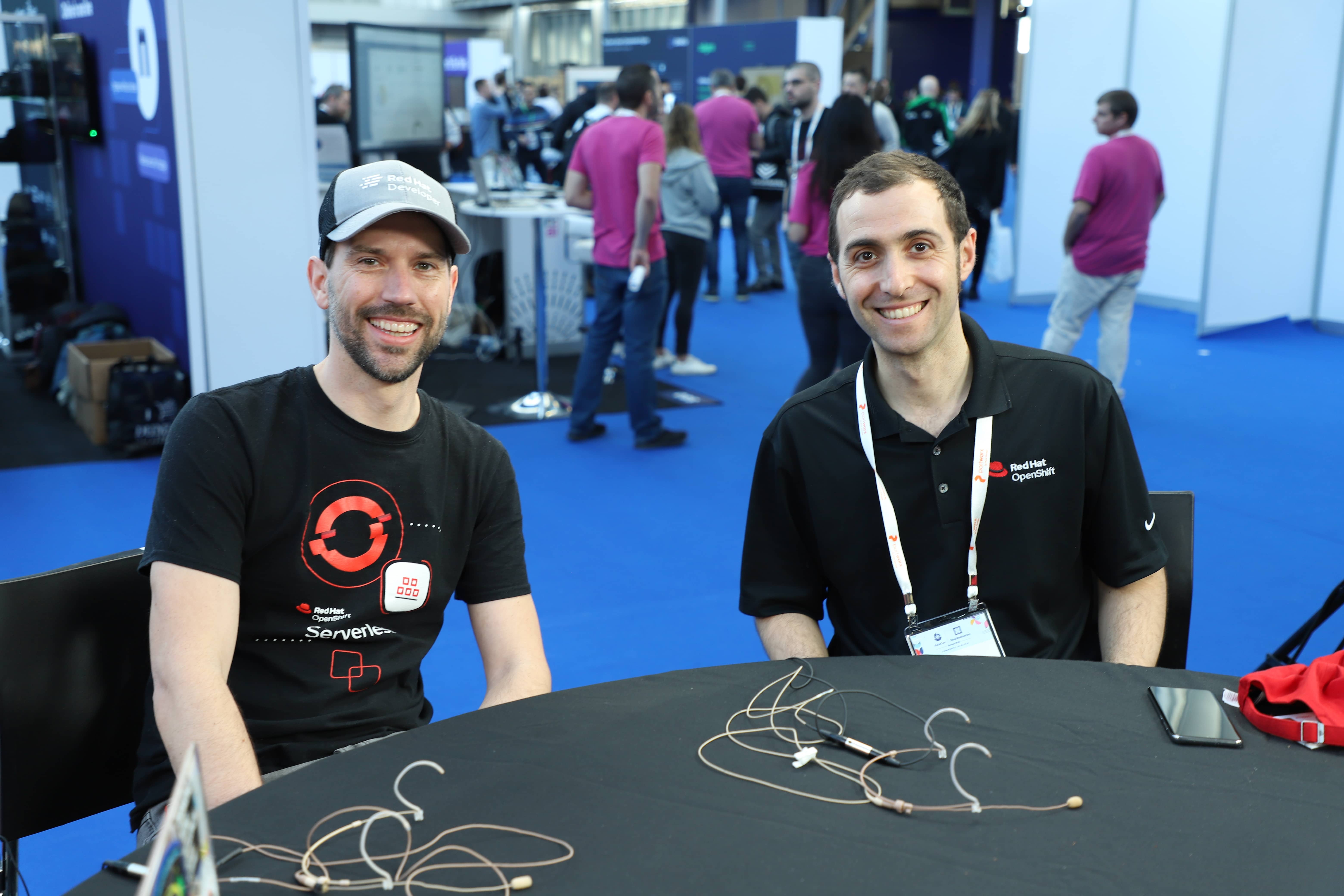 INFRA
INFRA
 INFRA
INFRA
 INFRA
INFRA
As Kubernetes enters its maturity phase, more emphasis is being placed on developer experience.
With platform engineering gaining momentum, Red Hat Inc. is using Kubernetes to boost this discipline, as it allows developers to work seamlessly using self-service capabilities, according to Natale Vinto (pictured, right), developer advocate lead at Red Hat.
“Red Hat is joining a very popular open-source software for platform engineering and internal developer platform called Backstage,” Vinto said. “We’re bringing our enterprise expertise into this community project, called Project Janus, which is a Backstage project where we are building this developer portal for developers. And we’re building on top of that.”
Vinto and Kevin Dubois (left), principal developer advocate at Red Hat, spoke with industry analysts Savannah Peterson and Rob Strechay at the KubeCon + CloudNativeCon Europe event, during an exclusive broadcast on theCUBE, SiliconANGLE Media’s livestreaming studio. They discussed how Red Hat is making the lives of developers’ easier using innovations like Kubernetes and platform engineering. (* Disclosure below.)
In the modern enterprise world, learning about Kubernetes has become important. This is because it has emerged as a standard just like an operating system, according to Vinto.
“I think there’s a maturity of usage of Kubernetes as the de facto platform, the target platform for your app,” he explained. “Your target app is Kubernetes, and that’s a fact.”
To address developer pain points, having a listening ear is fundamental. As a result, Red Hat uses initiatives like Podman Desktop for this purpose, because it was originally created as an open-source alternative container runtime, according to Dubois.
“Docker Desktop is a great tool; however, there some decisions that were made and perhaps some things that the customers or the users are missing. So, we have Podman already. Lets see how we can expand on top of that with a nice user experience,” he said. “Developers can use this tool to have containers that can then be used to even be deployed to Kubernetes, to OpenShift.”
Here’s the complete video interview, part of SiliconANGLE’s and theCUBE’s coverage of the KubeCon + CloudNativeCon Europe event:
(* Disclosure: Red Hat Inc. sponsored this segment of theCUBE. Neither Red Hat nor other sponsors have editorial control over content on theCUBE or SiliconANGLE.)
Support our mission to keep content open and free by engaging with theCUBE community. Join theCUBE’s Alumni Trust Network, where technology leaders connect, share intelligence and create opportunities.
Founded by tech visionaries John Furrier and Dave Vellante, SiliconANGLE Media has built a dynamic ecosystem of industry-leading digital media brands that reach 15+ million elite tech professionals. Our new proprietary theCUBE AI Video Cloud is breaking ground in audience interaction, leveraging theCUBEai.com neural network to help technology companies make data-driven decisions and stay at the forefront of industry conversations.